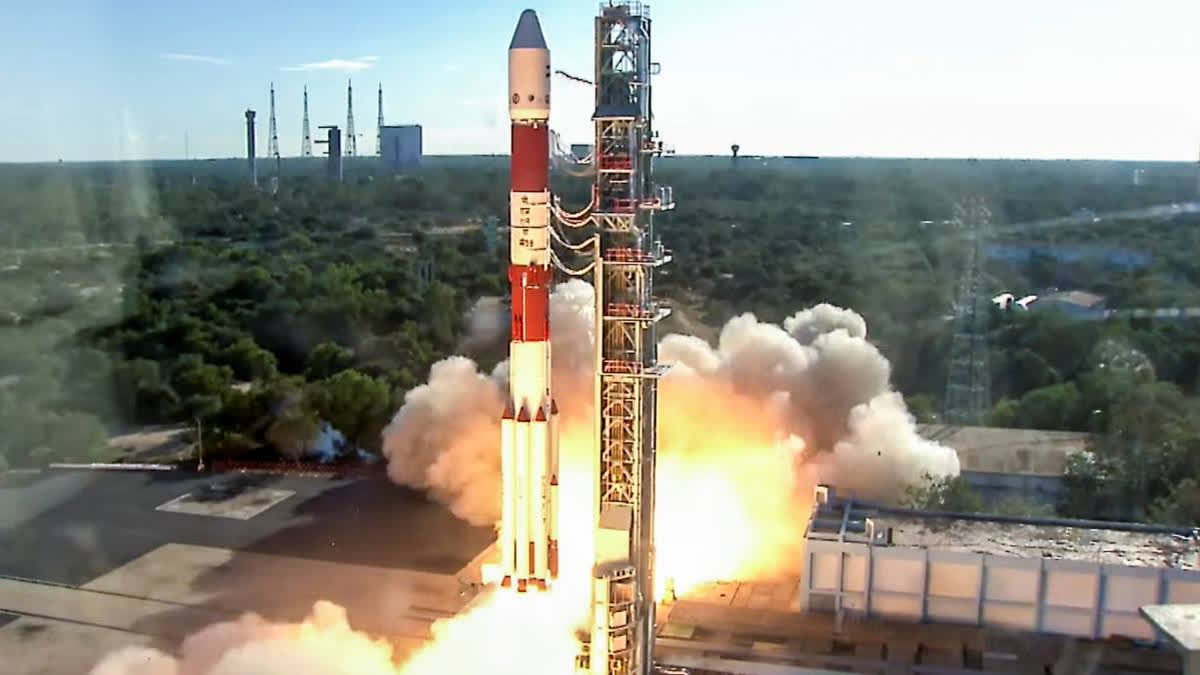Sriharikota: The Indian Space Research Organisation (ISRO) has successfully launched the European Space Agency's Proba-3 mission, taking the unique coronagraph into the highly elliptical orbit aboard its PSLV-C59 vehicle.
Led by NewSpace India Limited (NSIL), the launch took place at 4:04 PM IST from Satish Dhawan Space Centre in Sriharikota, Andhra Pradesh.
"The PSLV-C59 Proba-3 mission is successfully accomplished," ISRO Chairman Dr S Somanath said following the successful launch. "The spacecraft has been placed in the right orbit, which is a very highly elliptical orbit of almost 600 km perigee-- the closest point to Earth and over 60,000 km at its apogee-- the farthest point and an inclination of 59 degrees."
Somanath mentioned that the Proba-3 launch is PSLV's 61st mission, congratulated the team behind the launch, and wished Proba success in its operations.
✅ Mission Success!
— ISRO (@isro) December 5, 2024
The PSLV-C59/PROBA-3 Mission has successfully achieved its launch objectives, deploying ESA’s satellites into their designated orbit with precision.
🌌 A testament to the trusted performance of PSLV, the collaboration of NSIL and ISRO, and ESA’s innovative…
The Bengaluru-headquartered space agency had originally planned to launch the European Space Agency's (ESA) Proba-3 at 4.08 pm on Wednesday from the spaceport here.
However, minutes before the lift-off, following the request from the European Space Agency, ISRO rescheduled the launch of PSLV-C59/PROBA-3 to December 5, 4.04 pm. It was rescheduled following an anomaly detected in the satellite propulsion system.
ESA's Proba-3 at a glance
The Proba-3 mission involves two spacecraft: the Coronagraph Spacecraft (CSC) (310kgs) and the Occult Spacecraft (OSC) (240kgs), weighing around 550 Kg combined. These satellites were launched in a stacked configuration and deployed into a highly elliptical orbit. The mission's primary goal is to demonstrate precise formation flying, with the two spacecraft maintaining a 150-meter distance to study the Sun's corona, its outer atmosphere, which is much hotter than the Sun's surface and is where space weather originates.
The spacecraft will fly in tandem, with the Occulter blocking the solar disk, allowing the Coronagraph to observe the corona for scientific research. Proba-3 will offer critical insights into the Sun's activity, complementing ISRO's earlier success with the Aditya-L1 mission in 2023, which studied the Sun.
Proba-3 is a technology demonstration mission funded via the General Support Technology Programme. The instruments onboard the satellites would travel closer to the solar rim for up to six hours at a time and each spacecraft would take up approximately a 19-hour orbit around the Earth.
'Probas' is a Latin word, meaning 'Let's try'. The mission objective is to demonstrate precise formation flying and the two spacecraft inside the satellites would be launched together in a stacked configuration after the desired orbit level is reached. After reaching the preparatory conditions, would fly 150 metres apart (as one large satellite structure) in tandem so that the 'Occulter spacecraft would block out the solar disk of the Sun enabling the 'Coronagraph' to study the corona of the Sun for scientific observation. (With PTI Inputs)



